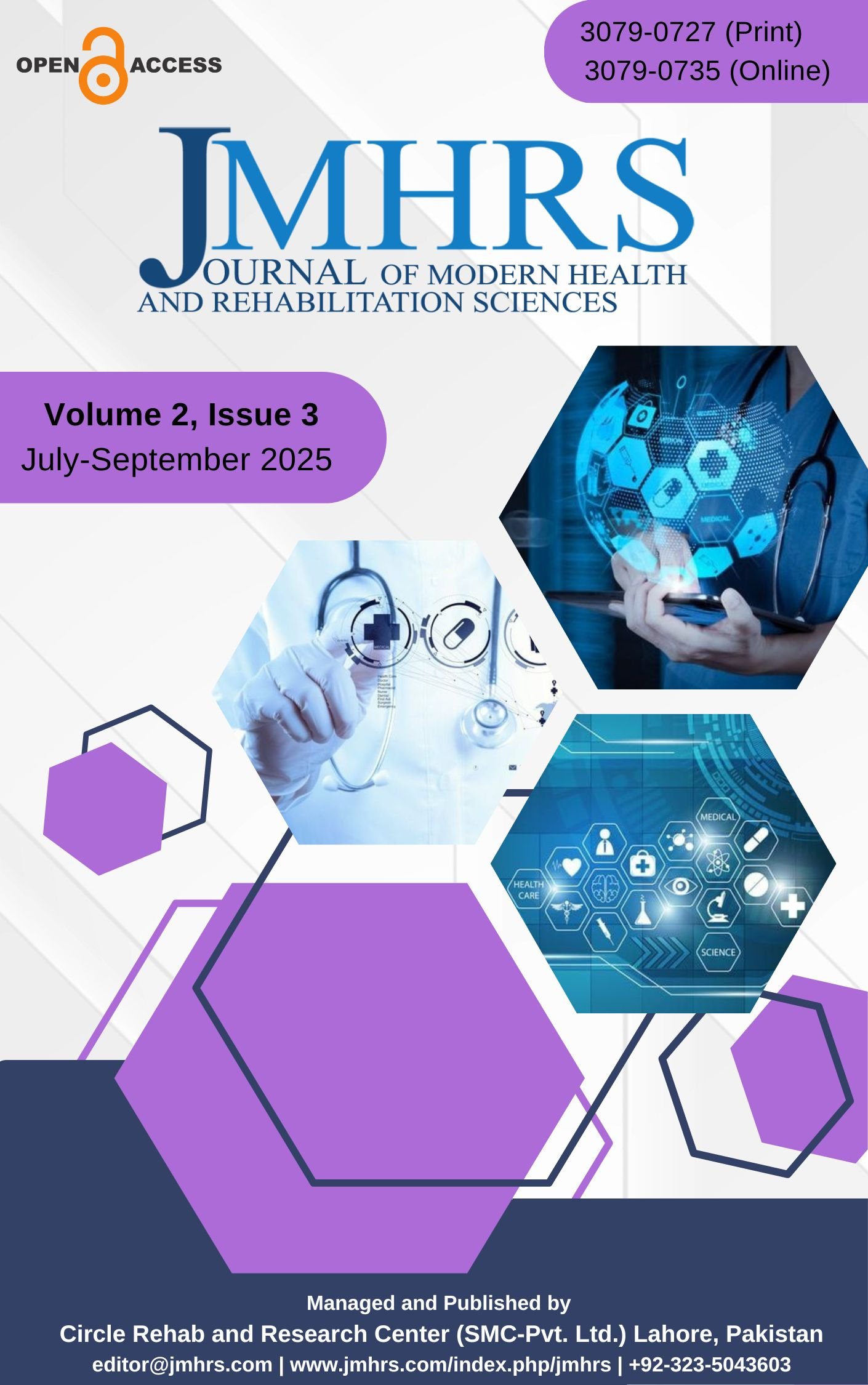Comparison of Hand Function and Grip Strength in Male and Female Hand Weavers
Keywords:
Ergonomics, Gender Differences, Hand Strength, Musculoskeletal Diseases, Occupational Health, Textile Industry, Weaving IndustryAbstract
Background: Hand weaving is a labor-intensive occupation that demands prolonged repetitive hand use, predisposing workers to musculoskeletal strain and reduced grip strength. Gender differences in grip strength and hand function among weavers have not been comprehensively studied in South Asia. Objective: To compare hand grip strength and hand function between male and female hand weavers and to identify predictors of functional disability. Methods: A cross-sectional observational study was conducted on 377 participants (246 males, 131 females) recruited from vocational training institutes in Pakistan between November 2022 and February 2023. Eligible participants were aged 24–36 years, with ≥3 years of weaving experience and ≥5 working hours per day. Hand grip strength was measured using a hand-held dynamometer, and hand function was assessed using the Patient-Rated Wrist Evaluation (PRWE) questionnaire and data were analyzed using SPSS version 25. Results: Males exhibited significantly higher grip strength compared to females (38.4 ± 6.2 kg vs. 27.1 ± 5.8 kg, p < 0.001). Females reported higher disability with PRWE pain (24.6 ± 8.1 vs. 18.5 ± 7.3, p < 0.01), function (41.3 ± 13.2 vs. 32.7 ± 12.4, p < 0.01), and total score (65.9 ± 18.1 vs. 51.2 ± 16.5, p < 0.001). Regression analysis identified gender as the strongest predictor of both outcomes, while higher BMI was associated with stronger grip and lower disability (p < 0.01). Conclusion: Male weavers demonstrated superior grip strength and functional outcomes compared to females, who showed greater exposure to musculoskeletal disability. Ergonomic interventions and preventive strategies are warranted to reduce occupational strain among hand weavers.
Keywords: Ergonomics, Gender Differences, Hand Strength, Musculoskeletal Diseases, Occupational Health, Textile Industry, Weaving Industry.
Downloads

Downloads
Published
Issue
Section
License
Copyright (c) 2025 Kiran Fatima, Fariha Javed, Iqra Abdul Ghafoor, Rubab Ashiq (Author)

This work is licensed under a Creative Commons Attribution-NonCommercial 4.0 International License.
Copyright ©. Authors retain copyright and grant publishing rights to Journal of Modern Health and Rehabilitation Sciences (JMHRS).
















